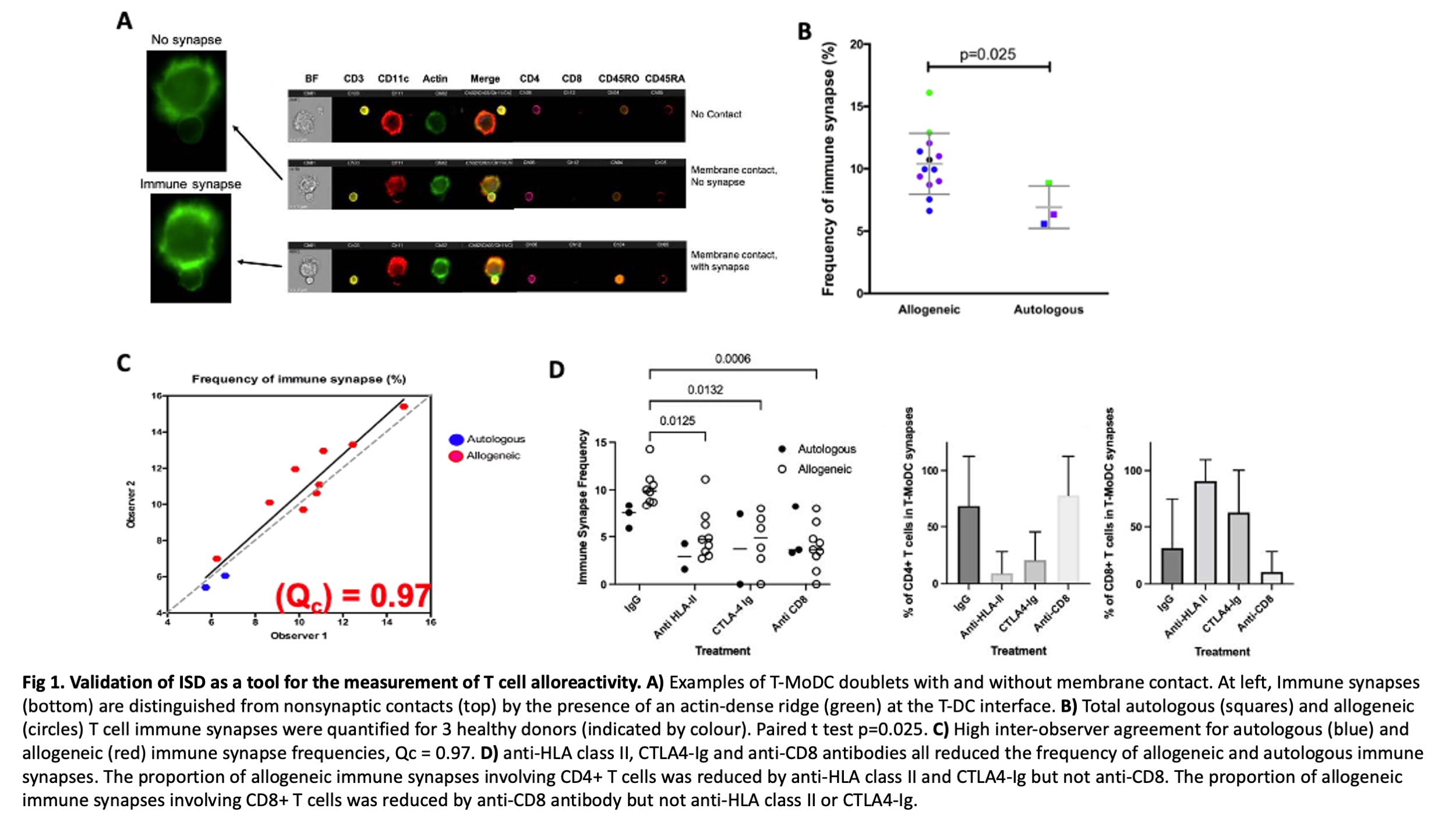High-Throughput Immune Synapse Detection as a Tool for the Measurement of T Cell Alloreactivity in Humans
University Health Network, Toronto, ON, Canada
Meeting: 2022 American Transplant Congress
Abstract number: 911
Keywords: Allorecognition
Topic: Basic Science » Basic Science » 03 - Antigen Presentation / Allorecognition / Dendritic Cells
Session Information
Session Name: Antigen Presentation / Allorecognition / Dendritic Cells
Session Type: Poster Abstract
Date: Sunday, June 5, 2022
Session Time: 7:00pm-8:00pm
 Presentation Time: 7:00pm-8:00pm
Presentation Time: 7:00pm-8:00pm
Location: Hynes Halls C & D
*Purpose: Accurate measurement of T cell alloreactivity may allow prediction of graft outcome and the selection of patients for immunosuppression optimization. Current technologies cannot reliably determine the frequency or phenotype of alloreactive T lymphocytes in transplant recipients. We developed an imaging flow cytometry-based immune synapse detection (ISD) method to define the composition and size of the alloreactive T cell repertoire in healthy donor samples. Here, we validate ISD as a tool for the measurement of T cell alloreactivity in humans.
*Methods: Donor monocyte-derived dendritic cells from healthy donors (n=5) were used as APCs in 4 hour co-cultures with purified allogeneic or autologous T cells prior to fixation and staining. Immune synapses, reflected by the formation of an actin-rich ridge at the T-APC contact region, were distinguished from non-immunogenic contacts using an ImageStream Mark X imaging flow cytometer.
*Results: Among all doublets in which APCs and T cells were in contact (Fig 1A), we observed a higher frequency of allogeneic (mean=10.2%) compared with autologous (mean=4.8%) synapses (Fig 1B). Alloreactive T cell frequency in a given sample had a very high interobserver agreement, as indicated by Lin’s concordance correlation coefficient (Qc) of 0.97 (Fig 1C), supporting the reliability of this method. Specificity for true immune synapse formation was demonstrated by blocking T cell costimulation (CTLA-4Ig), blocking MHCII (inhibiting CD4+ T cell synapses), and blocking CD8 (inhibiting CD8+ T cell synapses, Fig 1D). Mixed leukocyte reactions with the same cells revealed a similar alloreactive precursor frequency (mean= 7.8%).
*Conclusions: ISD identifies and phenotypes alloreactive T cells in the peripheral blood of healthy controls. Testing this approach in transplant recipients is now underway. In the future, this approach may allow personalized tailoring of immunosuppression.
To cite this abstract in AMA style:
Moshkelgosha S, Xiang A, Bei K, Hon I, Juvet S. High-Throughput Immune Synapse Detection as a Tool for the Measurement of T Cell Alloreactivity in Humans [abstract]. Am J Transplant. 2022; 22 (suppl 3). https://atcmeetingabstracts.com/abstract/high-throughput-immune-synapse-detection-as-a-tool-for-the-measurement-of-t-cell-alloreactivity-in-humans/. Accessed December 18, 2025.« Back to 2022 American Transplant Congress

